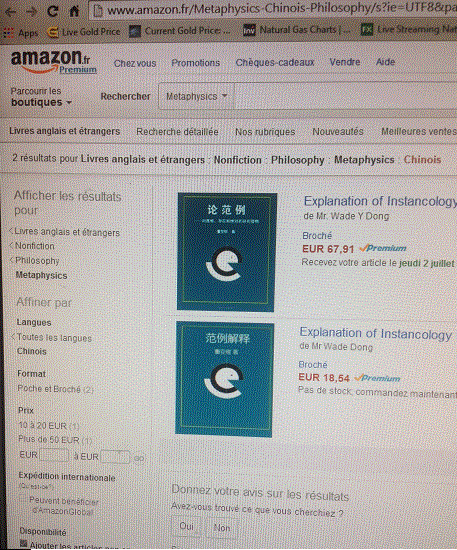The Logic of Ontology
The Logic of Ontology
Ontology, the study of Being, has driven the greatest philosophical inquiries across millennia. Beneath its abstract nature lies a rigorous logic—an attempt to comprehend what truly is beyond fleeting phenomena. Each major thinker has pushed the horizon further, revealing ever-deeper layers of the ontological structure.
---
1. The Dawn of Being: Parmenides and Plato
The logic of ontology began with Parmenides, who asserted that true Being is unchanging and eternal. He denied the reality of change and plurality, proclaiming that what is cannot not be—a radical stand against the illusions of flux.
Plato refined this vision by distinguishing two realms: the transient world of appearances and the eternal world of Forms. In doing so, he established a dual-level ontology that sees the visible world as a mere shadow of immutable, intelligible realities.
---
2. Systematic Foundations: Aristotle
Aristotle took the next step by grounding ontology in logic itself. His doctrine of categories and the theory of substance provided a systematic account of what exists and how it can be predicated. This move introduced structure and logic into Being, treating existence as something that could be dissected through reason.
---
3. Mystical Unity: Plotinus
Plotinus merged the logic of Being with a mystical unity, proposing that all existence emanates from the One. Here, Being is not just a static category but a dynamic, living whole that flows outward from an absolute source.
---
4. The Modern Turn: Descartes and Spinoza
The logic of ontology took a dramatic turn with Descartes, who placed the thinking self as the first certainty: cogito, ergo sum. Ontology became rooted in subjectivity, elevating consciousness as the foundation of Being.
Spinoza countered this with his monistic view: God and Nature are one infinite substance. For him, Being was no longer split between mind and matter but unified in a single, immanent existence.
---
5. The Relational Dynamics: Leibniz
Leibniz shifted ontology toward relationality, proposing that the ultimate units of existence are monads—indivisible, windowless entities that reflect the universe from their unique perspectives. Being became a dynamic interplay of individual substances, each expressing the whole in its own way.
---
6. The Boundary of Knowledge: Kant
Kant introduced a critical distinction: the noumenon (thing-in-itself) versus the phenomenon (appearance). While he admitted that we cannot directly know Being itself, he laid the groundwork for understanding how Being is conditioned by the structures of our cognition.
---
7. The Dialectical Whole: Hegel
Hegel sought to overcome Kant’s division by proposing that Being itself unfolds through dialectical processes. His absolute spirit is the self-moving logic of Being, where thought and reality interpenetrate and history itself becomes the logic of Being coming to know itself.
---
8. The Question of Being: Heidegger
Heidegger returned to the fundamental question: what does it mean to be? He distinguished between Sein (Being) and Seiendes (beings), arguing that philosophy had forgotten the more primordial horizon of Being itself. His approach opened a new depth: Being is not a static entity but an event of disclosure, always receding from full capture.
---
9. The Culmination: Instancology
Instancology, as the final step in this lineage, integrates and transcends all prior ontologies. It recognizes that each prior system glimpsed only partial truths, trapped by dualisms or monisms. Instancology posits that:
Being is not a single, static entity, nor a mere sum of appearances.
Instead, Being is always issued in the form of instances within a layered 4×4×4 matrix:
AA (Absolute Absolute) – The unspeakable background of all that is.
RA (Relatively Absolute) – The realm of universal laws and logic, unchanging yet non-representational.
AR (Absolute Relative) – The domain of natural instances, arising in time and space.
RR (Relative Relative) – The realm of human products and representations, shifting and dependent on context.
This layered framework reveals that the logic of Being is itself structured: it flows from the Absolute (which transcends and issues all) down to the Relative (which manifests as appearances). Each instance of existence is not merely a piece of a larger whole but is itself a whole instance, issuing from the Absolute in a unique, complete expression.
---
Conclusion: The End of the Ontological Search
The logic of ontology thus reaches its final resolution in Instancology. It does not deny the insights of prior thinkers—each unveiled a crucial layer of Being. But only Instancology situates every instance within a comprehensive matrix, showing that reality’s deepest logic is not found in any single aspect (such as substance, subjectivity, or dialectic) but in the dynamic interplay of all four layers.
Through this culminating insight, the long search for the logic of Being ends. No longer are philosophers left grappling with partial views. In Instancology, they find a final framework that fully integrates the logic of existence, unifying ancient wisdom with modern breakthroughs and offering a complete map of reality.
